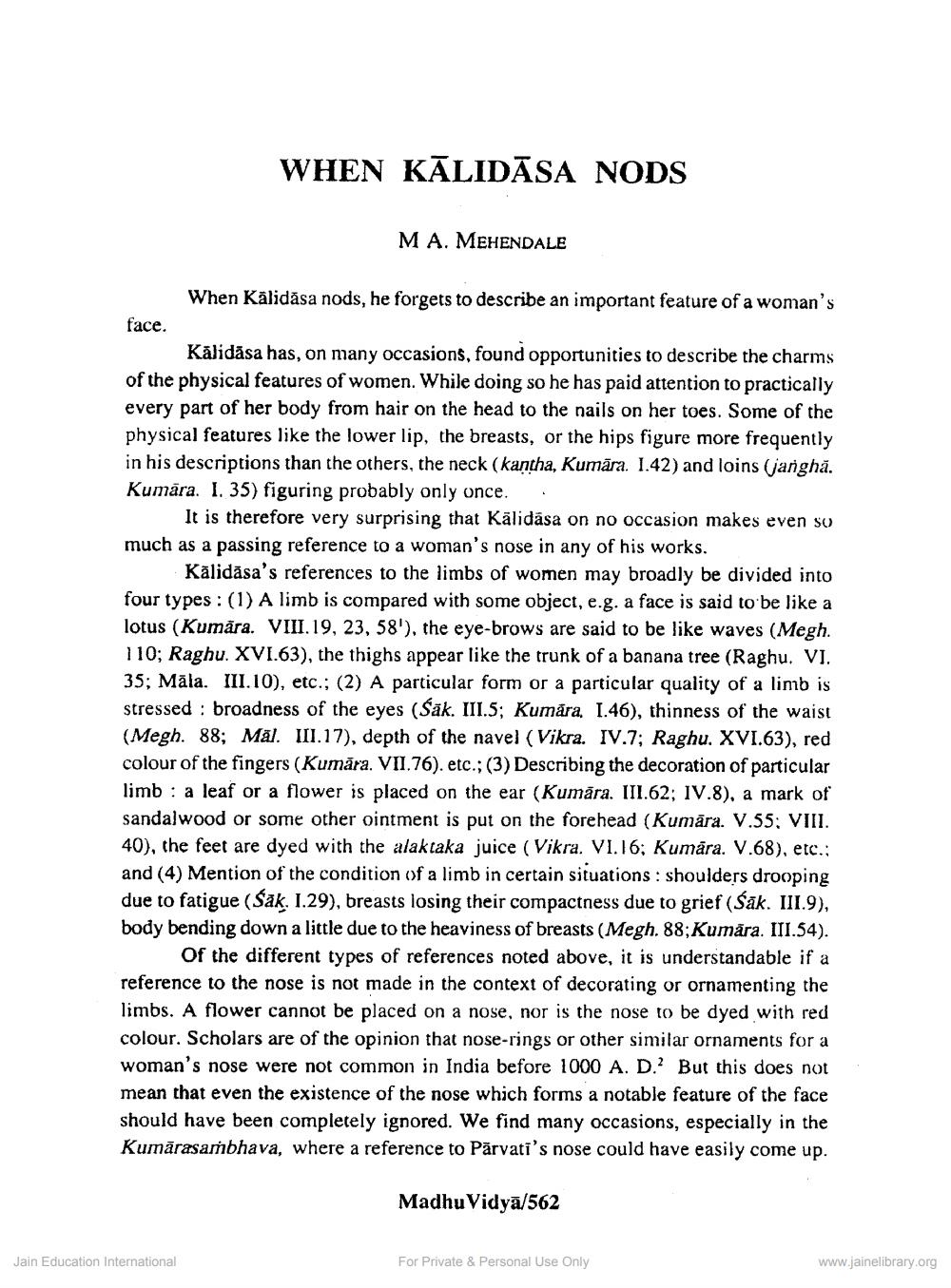________________
face.
WHEN KALIDĀSA NODS
When Kalidasa nods, he forgets to describe an important feature of a woman's
Kalidasa has, on many occasions, found opportunities to describe the charms of the physical features of women. While doing so he has paid attention to practically every part of her body from hair on the head to the nails on her toes. Some of the physical features like the lower lip, the breasts, or the hips figure more frequently in his descriptions than the others, the neck (kantha, Kumāra. 1.42) and loins (jangha. Kumara. 1. 35) figuring probably only once.
It is therefore very surprising that Kalidasa on no occasion makes even so much as a passing reference to a woman's nose in any of his works.
Kalidasa's references to the limbs of women may broadly be divided into four types: (1) A limb is compared with some object, e.g. a face is said to be like a lotus (Kumara. VIII. 19, 23, 58'), the eye-brows are said to be like waves (Megh. 110; Raghu. XVI.63), the thighs appear like the trunk of a banana tree (Raghu. VI. 35; Mala. III.10), etc.; (2) A particular form or a particular quality of a limb is stressed broadness of the eyes (Sak. III.5; Kumara, 1.46), thinness of the waist (Megh. 88; Mal. III.17), depth of the navel (Vikra. IV.7; Raghu. XVI.63), red colour of the fingers (Kumāra. VII.76). etc.; (3) Describing the decoration of particular limb a leaf or a flower is placed on the ear (Kumāra. III.62; IV.8), a mark of sandalwood or some other ointment is put on the forehead (Kumāra. V.55; VIII. 40), the feet are dyed with the alaktaka juice (Vikra. V1.16; Kumara. V.68), etc.: and (4) Mention of the condition of a limb in certain situations: shoulders drooping due to fatigue (Sak, 1.29), breasts losing their compactness due to grief (Sak. III.9), body bending down a little due to the heaviness of breasts (Megh. 88; Kumāra. III.54). Of the different types of references noted above, it is understandable if a reference to the nose is not made in the context of decorating or ornamenting the limbs. A flower cannot be placed on a nose, nor is the nose to be dyed with red colour. Scholars are of the opinion that nose-rings or other similar ornaments for a woman's nose were not common in India before 1000 A. D. But this does not mean that even the existence of the nose which forms a notable feature of the face should have been completely ignored. We find many occasions, especially in the Kumarasambhava, where a reference to Pārvati's nose could have easily come up.
Madhu Vidya/562
Jain Education International
M A. MEHENDALE
For Private & Personal Use Only
www.jainelibrary.org




